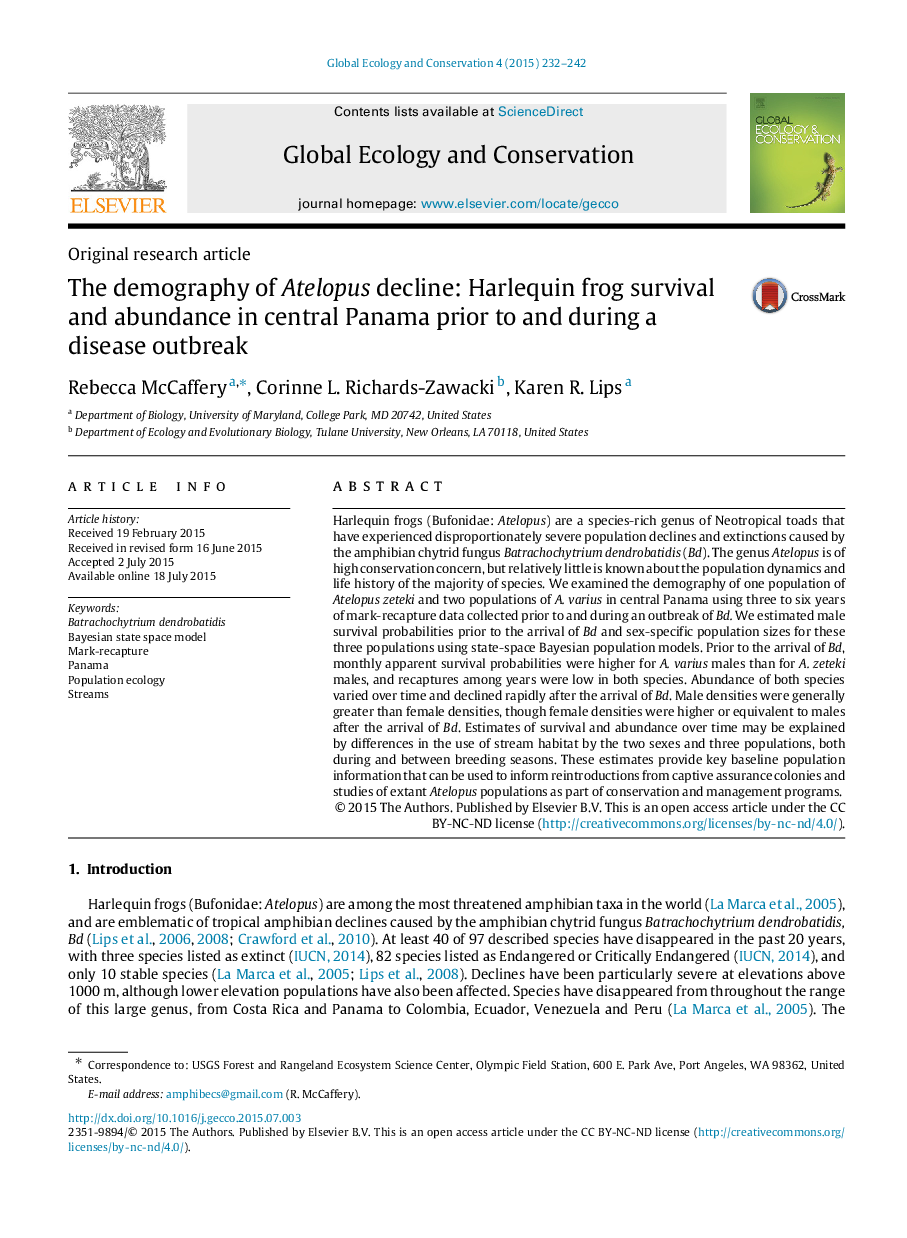| Article ID | Journal | Published Year | Pages | File Type |
|---|---|---|---|---|
| 4379498 | Global Ecology and Conservation | 2015 | 11 Pages |
Harlequin frogs (Bufonidae: Atelopus) are a species-rich genus of Neotropical toads that have experienced disproportionately severe population declines and extinctions caused by the amphibian chytrid fungus Batrachochytrium dendrobatidis (Bd). The genus Atelopus is of high conservation concern, but relatively little is known about the population dynamics and life history of the majority of species. We examined the demography of one population of Atelopus zeteki and two populations of A. varius in central Panama using three to six years of mark-recapture data collected prior to and during an outbreak of Bd. We estimated male survival probabilities prior to the arrival of Bd and sex-specific population sizes for these three populations using state-space Bayesian population models. Prior to the arrival of Bd, monthly apparent survival probabilities were higher for A. varius males than for A. zeteki males, and recaptures among years were low in both species. Abundance of both species varied over time and declined rapidly after the arrival of Bd. Male densities were generally greater than female densities, though female densities were higher or equivalent to males after the arrival of Bd. Estimates of survival and abundance over time may be explained by differences in the use of stream habitat by the two sexes and three populations, both during and between breeding seasons. These estimates provide key baseline population information that can be used to inform reintroductions from captive assurance colonies and studies of extant Atelopus populations as part of conservation and management programs.
